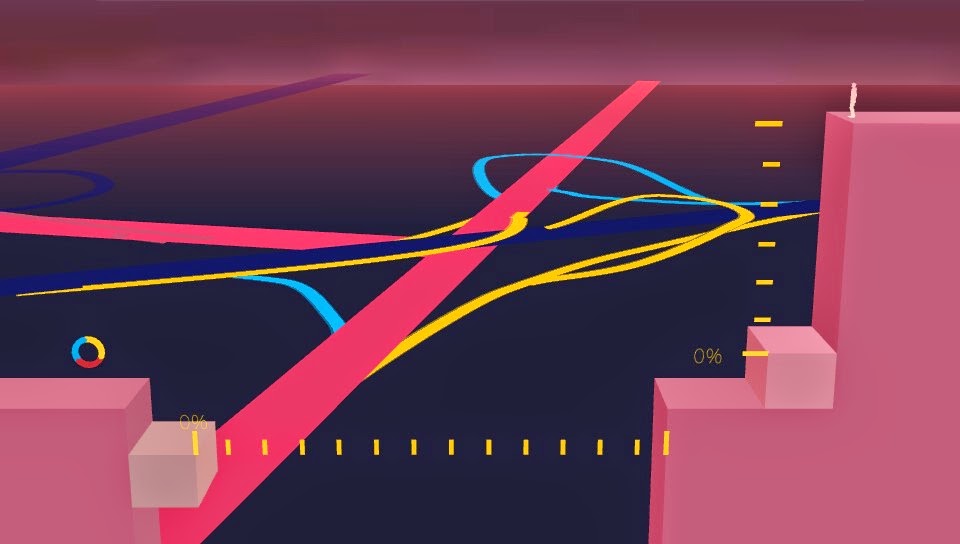I have now progressed further than ever before. Bloodlust has been conquered.
Back in 2005, I wrote of my troubles. I started
optimistic, settled for a
war of attrition, then got a bit gung-ho and
lost it all. I tried many times to complete that level, and never managed it. I did this time, though - on the fourth attempt. This was a hard level.
I think my focus was initially misplaced. Just over the ridge from my starting position was a stone head, which the red tribe began worshipping at pretty soon after the start of each game. I was dashing over there as soon as possible, to stop them gaining a spell that I thought would be catastrophic for me. In fact, by leaving them to it (and blocking off access to the reds from my village) they used the bloodlust spell they gained on the yellow tribe part way through the game, causing chaos in my enemy's village.
So, rather than attacking the reds, I concentrated on killing off the greens as quickly as possible. I built up a small army of preachers and warriors, and opened a pathway as quickly as I could down to their village. I sent my followers down for a scrap, and quickly demolished the village. One enemy down.
This then gave me a lot more space to expand my village, but I was suffering from attacks from the reds and yellows in the older side of my settlement. I built a huge wall across the level, separating us off - though I left a small gap through which the red team was constantly funnelled, including the shaman. I put down about 20 swamp spells there, meaning that I kept on gaining a nice manna boost.
As I said, the reds and yellows were fighting among themselves as well. This meant that the yellow settlement shifted over time, and the yellows moved closer to the newer side of my settlement. I was suffering a constant influx of armies, so I eroded the land around the edge of my settlement to create a water channel. I still had to contend with balloon invasions, but that was soon sorted.
My settlement was thriving, now that I was concentrating on defence (you can see the cliff wall on the west of the map in the screenshot above, and the balloons around the edge of the village), but there were a few issues. Firstly, the other settlements were also growing quickly, and secondly I was running out of building materials. I needed to be able to build more balloons for defence, but had nothing to make them out of. I just had to wait for trees to grow, to build up my army, all the time repelling the yellow army's attacks.
Note in the screenshot above the odd spit of land coming from the south of my settlement. I had noticed another stone head in the middle of the sea, and rather than using precious balloons to ferry people over there, I just raised land all the way across.
Eventually, I decided to make my move. I closed off the narrow cliff to make sure that the reds couldn't get through to my village just by sacrificing large numbers to overcome the swamps, and I raised a land bridge towards the yellows. I sent a huge army of preachers, warriors and some balloon-based firewarriors across, led by my shaman in a balloon who killed off the opposing firewarriors before they could attack. I killed the shaman, I destroyed the balloon factory and firewarrior training hut with tornadoes, I killed the shaman, I positioned a number of warriors and firewarriors around the resurrection site to kill the shaman every time she resurrected. It was a rout.
Until I noticed that the reds were on their way down the coast to attack my village. I quickly positioned all the remaining firewarrior balloons along the coast, and sent the shaman back to cast swamps to make sure. It took ages for my army to finish off the yellow village, because the iditos kept rebuilding it ...
... but eventually, with a bit of help from earthquakes and tornadoes, it fell.
Two down.
The reds were still a force to be reckoned with, however. They had a huge village and a huge army. My excursions to the yellows hadn't hurt my fortunes too much, luckily, and my villages were replacing the dead pretty quickly. I just needed to train more warriors and preachers - and particularly firewarriors.
But I had a trick up my sleeve. I'd found another stone head, which had given me four spells of bloodlust ... but the one in the middle of the sea had given me angel of death. Coupled with the fact that the reds hadn't built up a balloon army, this made things pretty easy. I took over my balloon army, destroying the firewarriors as we went, and then I unleashed the angel of death.
Once the enemy was reduced to a manageable amount, I ordered the rest of my followers to come up and destroy the village. They didn't even get there before the reds fell.
Nine years after I first started, I've completed Bloodlust.
I didn't stop there. The next level was good fun, with an armageddon spell available in the middle of the map. I think that the level is meant to see you stopping the others from getting that spell and then casting it for a massive brawl, but instead I wiped out two of the villages before casting the spell of a much reduced yellow army. Still fun though.






















